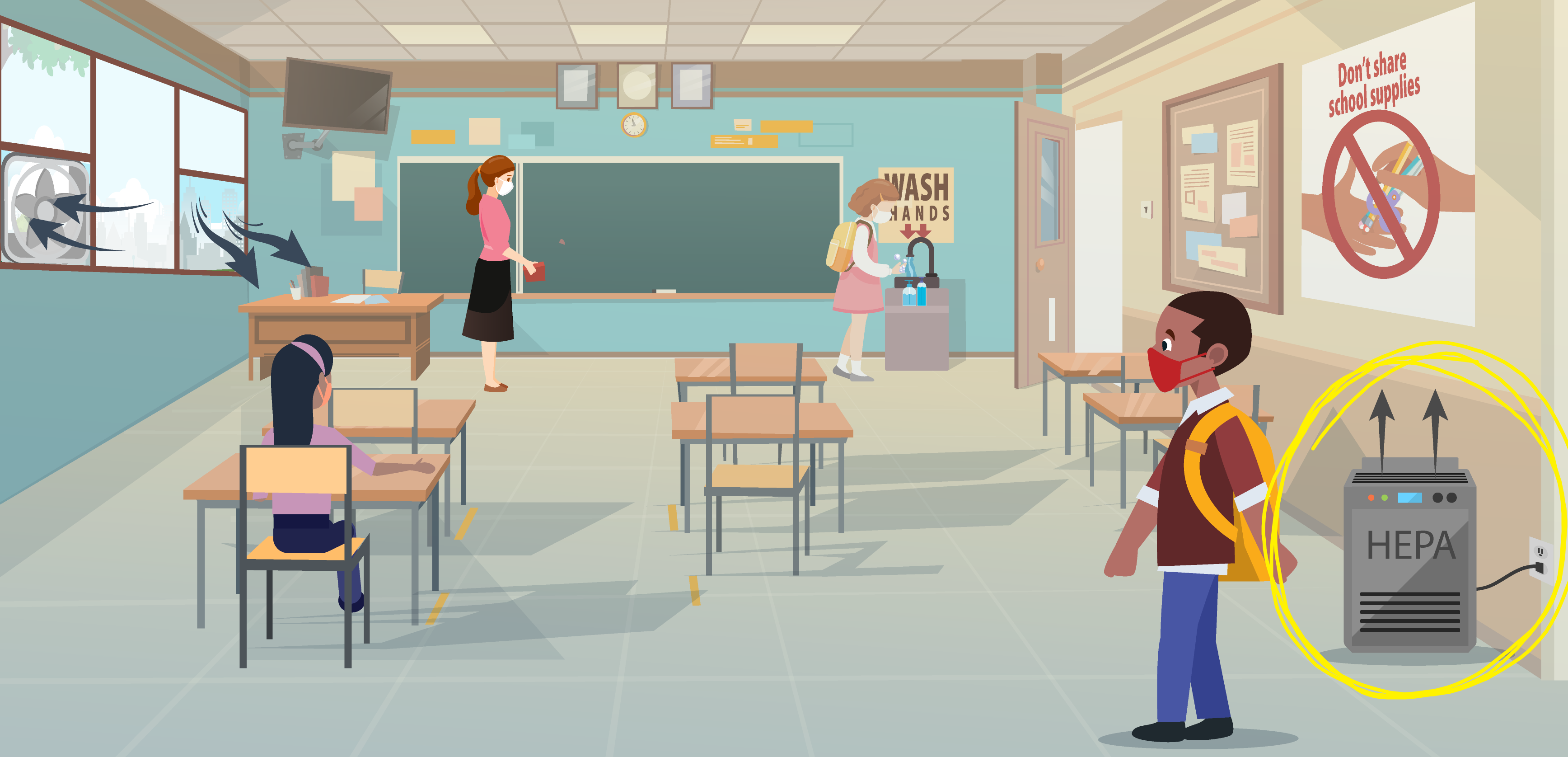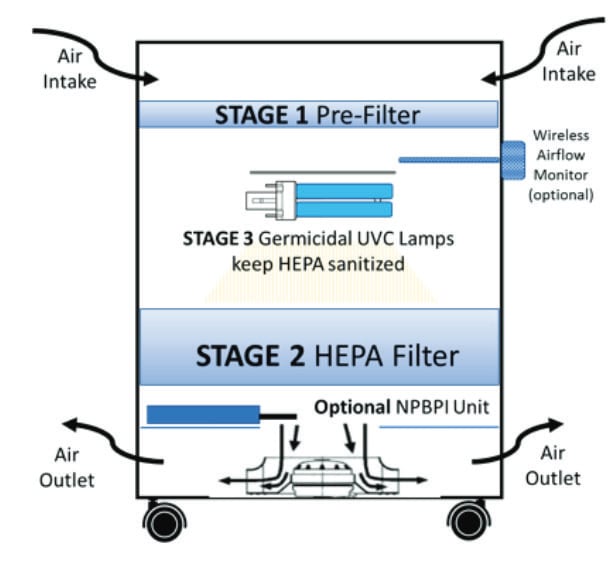March 16, 2021
By Luke Powell, WELL AP, LEED AP
Last month, the CDC issued revised recommendations for mitigating the spread of COVID-19. Part of those recommendations included portable air cleaners that use high-efficiency particulate air (HEPA) filters to enhance air cleaning wherever possible.
https://www.cdc.gov/coronavirus/2019-ncov/community/ventilation.html
https://www.cdc.gov/coronavirus/2019-ncov/community/schools-childcare/ventilation.html
Their “Ventilation in Schools and Childcare Programs” graphic even shows one of these portable units on it.
The American Society of Heating, Refrigeration and Air Conditioning Engineers (ASHRAE) has issued a special document specifically around “In-Room Air Cleaner Guidance for Reducing COVID19 in Air in Your Space/Room”.
So why does the CDC, EPA, OSHA and ASHRAE all recommend these units? Simple, they can remove 99.97% of contaminants from the air, including the respiratory droplets that spread the virus.
When we breathe, sing, sneeze, or cough, we release respiratory droplets, ranging in size from about 100 microns (the thickness of a human hair) down to microscopic levels (1 micron, which is one millionth of a meter).
Typically, we emit only a few larger respiratory droplets, which can only travel around 6 feet before falling to ground. At the same time, we emit hundreds to thousands of smaller microscopic droplets, known as aerosols, that can float in the air for minutes to hours like smoke or fog, and travel 16 feet or more, studies show.
These aerosol respiratory droplets are generally in the 1- to 10-micron range. Although viral particles are much smaller than that (0.1 to 0.3 microns), they generally “hitch a ride” on larger water droplets to become airborne.
These portable air cleaners with HEPA filters are actually more efficient at capturing smaller particles than larger particles.
The HEPA filter found in these cleaners can remove at least 99.97% of dust, pollen, mold, bacteria, pathogens, and other particles with a size of 0.3 microns, according to the U.S. Environmental Protection Agency.
This 0.3-micron designation is a worst-case scenario; particles that are larger or smaller are trapped even better.
The virus particles are captured on the filter, keeping them from growing and preventing them from being released back into the air. and they can’t be released.
Here are a few things you need to know about these units:
- Not all air cleaners are created equal.
- Look for air flow amounts to match your air change rate needs and noise concerns; review added options like UV lights and bi-polar ionization. Check life expectancy of HEPA filters (thicker filters last longer) and other accessories to get the true cost of ownership.
- The size of the room matters when it comes to air cleaner efficiency.
- Four to six air changes per hour is recommended for indoor spaces. That means the entire volume of air in a room is being cleaned or replaced every 10 to 15 minutes. That’s enough to remove COVID-19 aerosols from the air and knock down transmission risk.
- No single strategy — including a top-rated air cleaner, is a foolproof solution for combating the spread of the virus.
- The layered approach is best – wearing masks indoors, opening up windows, washing hands, bringing in more outdoor air, increasing the level of air filtration (through the HVAC systems … or portable air cleaners with HEPA filters).
Air Equipment Company is proud to represent GallatinAIR, makers of the KleanseAIR portable air cleaner. Please reach out to us if you would like to know more information or better understand how a portable in-room air cleaner can help make your indoor environment safer.
For more data on the efficacy of HEPA filters and COVID-19 see the links below:




